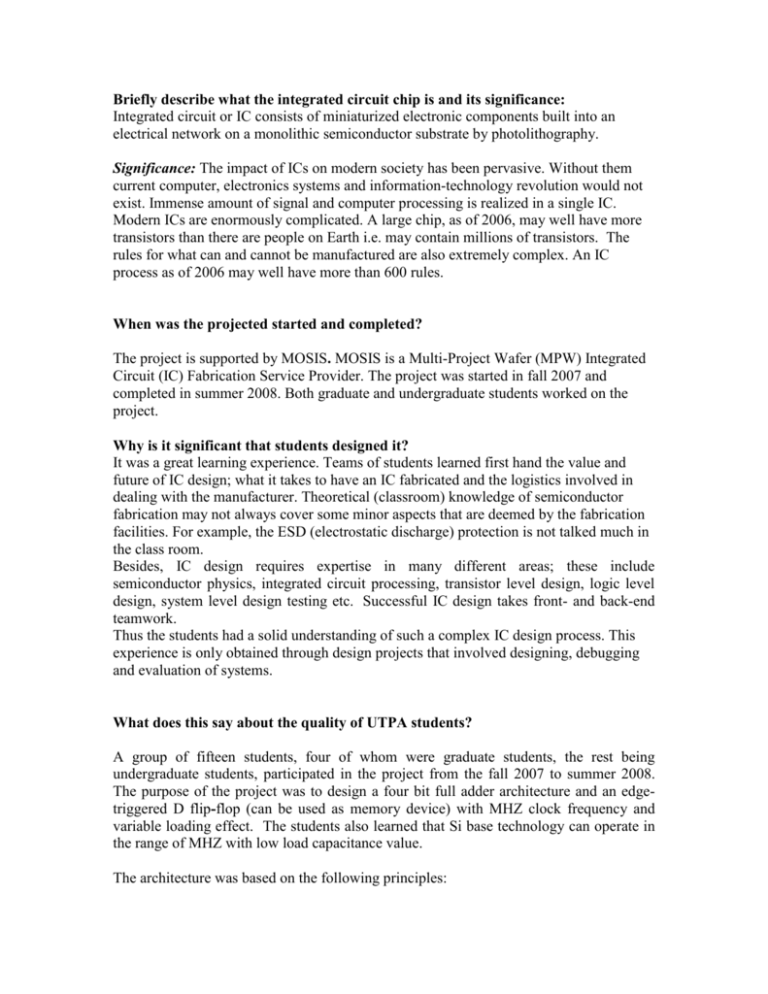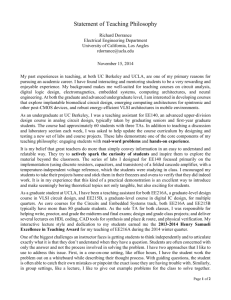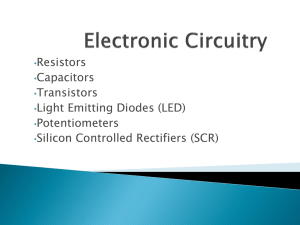Briefly describe what the integrated circuit chip is and its significance:
advertisement

Briefly describe what the integrated circuit chip is and its significance: Integrated circuit or IC consists of miniaturized electronic components built into an electrical network on a monolithic semiconductor substrate by photolithography. Significance: The impact of ICs on modern society has been pervasive. Without them current computer, electronics systems and information-technology revolution would not exist. Immense amount of signal and computer processing is realized in a single IC. Modern ICs are enormously complicated. A large chip, as of 2006, may well have more transistors than there are people on Earth i.e. may contain millions of transistors. The rules for what can and cannot be manufactured are also extremely complex. An IC process as of 2006 may well have more than 600 rules. When was the projected started and completed? The project is supported by MOSIS. MOSIS is a Multi-Project Wafer (MPW) Integrated Circuit (IC) Fabrication Service Provider. The project was started in fall 2007 and completed in summer 2008. Both graduate and undergraduate students worked on the project. Why is it significant that students designed it? It was a great learning experience. Teams of students learned first hand the value and future of IC design; what it takes to have an IC fabricated and the logistics involved in dealing with the manufacturer. Theoretical (classroom) knowledge of semiconductor fabrication may not always cover some minor aspects that are deemed by the fabrication facilities. For example, the ESD (electrostatic discharge) protection is not talked much in the class room. Besides, IC design requires expertise in many different areas; these include semiconductor physics, integrated circuit processing, transistor level design, logic level design, system level design testing etc. Successful IC design takes front- and back-end teamwork. Thus the students had a solid understanding of such a complex IC design process. This experience is only obtained through design projects that involved designing, debugging and evaluation of systems. What does this say about the quality of UTPA students? A group of fifteen students, four of whom were graduate students, the rest being undergraduate students, participated in the project from the fall 2007 to summer 2008. The purpose of the project was to design a four bit full adder architecture and an edgetriggered D flip-flop (can be used as memory device) with MHZ clock frequency and variable loading effect. The students also learned that Si base technology can operate in the range of MHZ with low load capacitance value. The architecture was based on the following principles: 1) Reducing production cost by employing standard logic structures for testing 2) Improving performance by organizing the complex design to minimize the overall size of the design 3) Higher speed by optimizing propagation delays and matching the transistors sizes The success of the project can be attributed to good planning at the beginning of the project, well maintained hardware and software tools, the students’ enthusiastic attitude, and most importantly, the spirit of teamwork. Most of the students at UTPA are First Generation College Students. But all of them were enthusiastic, smart at work, maximize their effectiveness, learn the rules and meet the dead line. All of these measures indicate that UTPA students’ quality is comparable to other students across the nation. Acknowledgement Dr. Heicrich Foltz, Mr. Robert Jackson and many undergraduate and graduate students supported the project. My sincere thanks to all of them





















